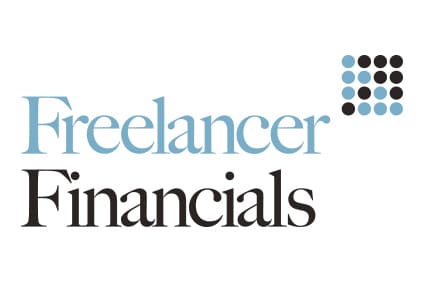HMRC underestimated effect of staff cuts

A recent report titled, ‘The quality of service for personal taxpayers’, compiled by the National Audit Office (NAO), confirms that it is no coincidence that the collapse of HMRC’s service to individual taxpayers occurred after the department shed some of its staff.
Central to HMRC’s funding settlement in 2010 was the department’s aim to reduce the cost of processing people’s tax affairs and invest more of its resources in tackling tax evasion and avoidance. The plan was to reduce costs over a five year period, with the majority of savings taking place in the last two years. This was to be achieved by increasing automation and improving productivity while moving more taxpayers to online services, thereby reducing demand for its telephone, postal and face-to-face services. All good in theory but the reality was somewhat different.
Over the last five years both the NAO and the Public Accounts Committee (PAC) have had cause to report on HMRC’s customer service on more than one occasion. In 2013, the PAC expressed concerns that the prospects of fewer staff and more calls were a real risk to HMRC achieving an acceptable standard of service.
Between 2010/11 – 2014/15 HMRC reduced the number of staff in personal tax from 26,000 to 15,000. To lessen the impact of its diminished headcount it planned to increase automation of the PAYE system, operate on a more flexible basis so staff could move between different services, and move taxpayers from traditional forms of contact to less expensive ones such as automated telephony and digital services.
Despite wielding the axe on jobs, HMRC maintained or improved its performance up until 2013/14. It trained personal tax staff to work more flexibly and moved staff elsewhere in the department to the tax helpline at times of high demand. In 2013/14 it answered 79% of helpline calls compared with 48% in 2010/11.
After 2013/14 however, HMRC miscalculated and released too many customer service staff before completing changes to its service. Despite the introduction of automated telephony and paperless self-assessment the public demand for telephone advice did not decline.
In late 2013 HMRC recognised that it had challenging budgets for 2014/15 and 2015/16 and that customer service performance would be adversely affected. Nevertheless, the Revenue believed it could maintain services by deploying staff more flexibly. Wrong! In 2014/15 HMRC met its target to handle 80% of calls in only 10 weeks of that year. Performance continued to deteriorate further over the first seven months of 2015/16, when average waiting times tripled in comparison to the previous year, peaking at 34 minutes for the taxes helpline in October 2015.
Only after recruiting 2,400 staff to the taxes helpline in Autumn 2015 did performance significantly improve thereby exposing HMRC’s decision to release 5,600 staff from personal tax in 2014/15 as foolhardy.
Impact on personal taxpayers
Customer satisfaction
The NAO surveyed a sample of taxpayers to rate HMRC’s services and the results were as follows:
- 58% – good or excellent
- 21% – average
- 21% – poor or terrible
Satisfaction was highest amongst those whose most recent contact with HMRC was online and lowest with those whose most recent contact had been by phone.
Call waiting times
For much of 2012/13 and 2013/14 average waiting times for the taxes helpline were below 10 minutes but this grew progressively longer throughout 2014/15 and the first seven months of 2015/16, when in late October 2015 average waiting times peaked at 34 minutes for the taxes helpline and 47 minutes for self-assessment calls. Some individuals, however, waiting for an adviser at busy times experienced waits as long as over an hour!
By January 2016 a marked improvement in service had reduced waiting times to around 5minutes.
Service accessibility
In 2008/09, 75% of taxpayers found it easy to get in touch with HMRC but this dropped to 58% in 2014/15. Most people still continue to interact with the Revenue by traditional methods of post or telephone.
HMRC has estimated that up to 1.37 million taxpayers may need extra help each year with their tax affairs but they do not have the capacity to deal with this. As a result, since 2014, voluntary organisations such as Citizens Advice, TaxAid and Tax Help for Older People have faced a rising demand for their help. This has caused HMRC to provide £14 million between 2010/11 – 2015/16 to those voluntary organisations providing support to taxpayers.
Economic cost to individuals
Using HMRC’s own benchmark of £17 per hour to estimate the economic cost of taxpayers’ time, the NAO estimate that the cost to those who called the Revenue’s taxes helpline increased by 54%, from £63 million in 2012/13 to £97million in 2015/16.
Value for money conclusion
Whilst HMRC maintained or improved its service to taxpayers until the end of 2013/14, the department then released staff before it had made all the changes needed to reduce demand. So whilst HMRC lived within its agreed budget this was at the expense of its quality of service to the public which collapsed in 2014/15 and the first half of 2015/16. This was a mistake and therefore did not represent value for money.
Although there has been an improvement in responding to phone calls and letters following the recruitment of 2,400 staff and shifting employees to call centres from other areas of HMRC, this level of resourcing is transitional and the headcount is due to fall again as the Revenue pursue its digitalisation programme due to be implemented by 2020/21.
Recommendations
The NAO says that HMRC needs to learn and apply the lessons of the last five years and get real! It makes a number of future recommendations, such as:
- When the Revenue reduces costs, it must take a realistic view of the knock on effect for customer service and the potential risk to tax revenue.
- In setting targets, it should not only take into account its own running costs but also those of the taxpayer, such as the cost of increased time spent waiting on the telephone.





Leave a Reply